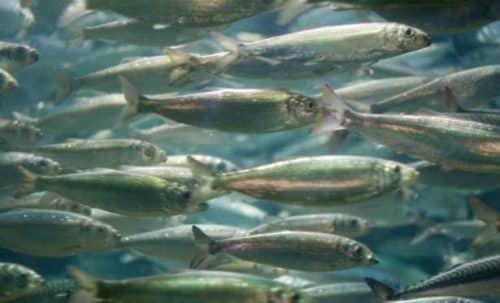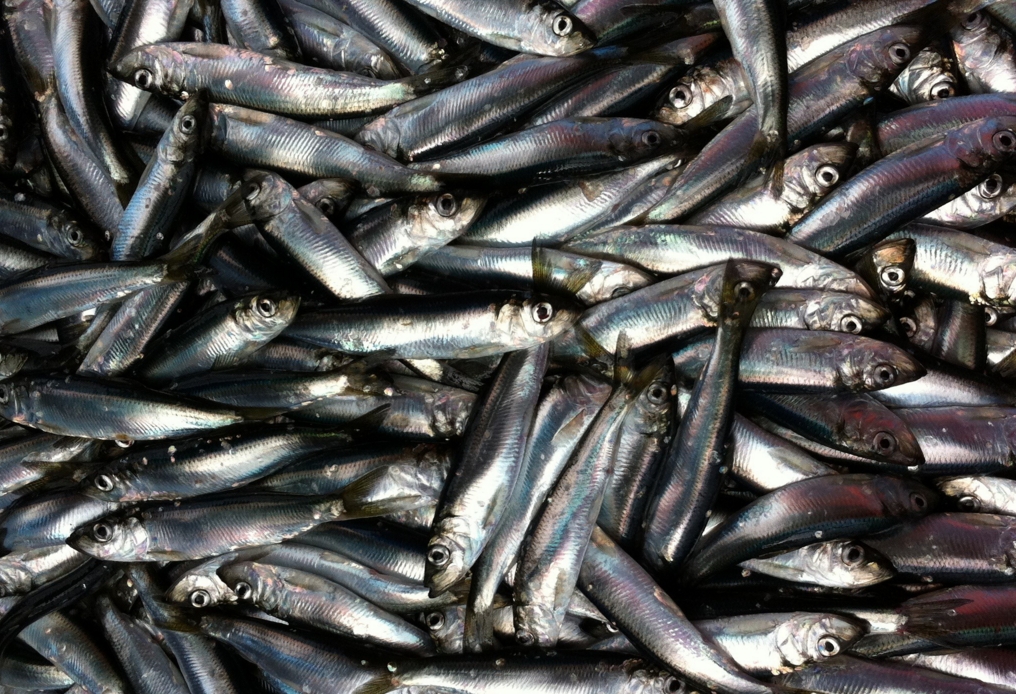 Alaska fishery area management biologists in Dillingham say the 2015 Togiak District herring biomass is forecast to be 163,480 tons, about 110 percent of the recent 10-year average.
Alaska fishery area management biologists in Dillingham say the 2015 Togiak District herring biomass is forecast to be 163,480 tons, about 110 percent of the recent 10-year average.
The forecast issued in late February is based on an age-structured analysis model in use since 1993.
It shows so far that herring ages 4-6 are expected to comprise 17 percent of the projected biomass, ages -7 and -8 comprising 27 percent, ages 9-11 up to 50 percent, and the remaining 6 percent from fish ages 12 years and over.
The commercial fishery and spawn timing is largely related to water temperatures experienced by herring on the spawning grounds. Other factors related to timing include sea surface temperatures and sea ice trends across the southeastern Bering Sea in the weeks prior to spawning, biologists said.
The Bristol Bay herring management plan sets a maximum 20 percent exploitation rate for the Togiak District stock.
Based on a forecast of 163,480 tons, up to 32,696 tons of herring would be available for harvest this year.
Harvest allocation, in accordance with the management plan, would be 1,500 tons of spawn-on-kelp; 2,184 tons of Dutch Harbor food and bait; 29,012 tons of Togiak sac roe; 20,309 tons, or 70 percent, for the purse seine fishery, and 8,704 tons, or 30 percent, for the gillnet fishery.
Management strategy for the Togiak herring fishery is designed to provide for maximum sustained yield while affording the greatest economic benefit.
In 2015, sac roe fisheries will again be managed to maximize product quality through long openings while allowing permit holders to make smaller sets and harvest the highest quality fish, biologists said. Long openings also allow processors to have flexible control of harvest volume so that holding time between harvest and processing is optimal, they said.
Based on a preseason poll, processing capacity is expected to be about 2,200 tons per day, or a 15 percent decrease from the 2014 daily capacity of 2,600 tons per day.
The preseason poll also indicates that five processors will participate in the Togiak sac roe herring fishery with a fleet size of 10 gillnet and 16 purse seine vessels.
For the last decade, the fishery has opened as soon as threshold biomass has been documented and biologists anticipate using this strategy again in 2015 to maximize fishing time. Biologists also believe this strategy allows individual companies to maximize their processing capacity and decide what quality is suitable for their individual market.
Beginning in late April or early May, current fishery information will be available by calling the telephone recorder in Dillingham at 907-842-5226.
Fishermen’s News Online grants permission to the Alaska Native News to post selected articles. Read More at: Fishermen’s News Online.









